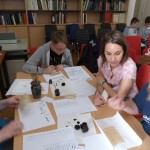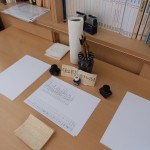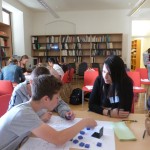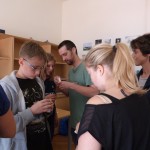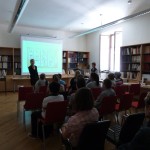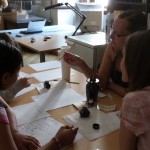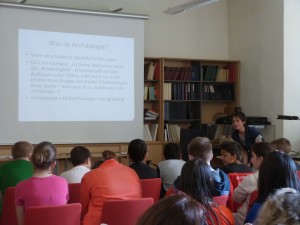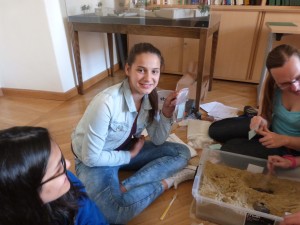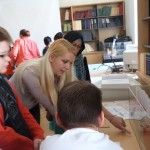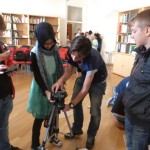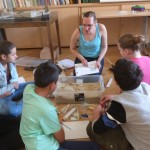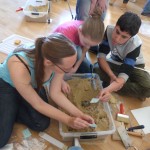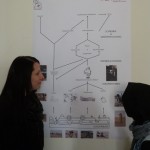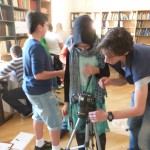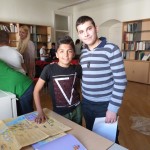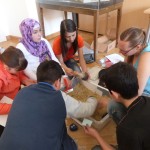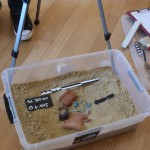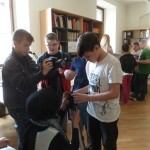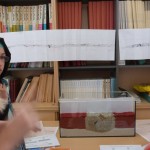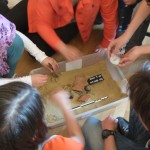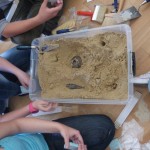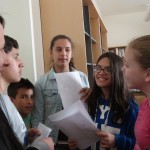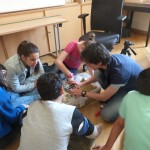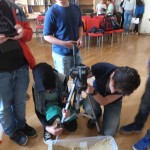The last of our series of workshops within the framework of the Junior Science Club 2014 was not directly connected with AcrossBorders and our excavations on Sai Island, but was dedicated to another important subject of the general field of Egyptology: Egyptian hieroglyphs and writing. Students of the secondary school Anton Sattlergasse Wien 22 were introduced to basic characteristics of ancient Egyptian writing. We explained the hieroglyphic alphabet and the kids were very good in stamping their names and other words in hieroglyphs, in deciphering words and puzzles and in writing with ink on papyrus.
Thanks to the kind support by Angelika Zdiarsky (Papyrussammlung und Papyrusmuseum, Österreichische Nationalbibliothek) we were able to show a miniature copy of the Rosetta stone, original modern papyrus and a modern copy of a scribal palette!
Modern computer applications for writing hieroglyphs were demonstrated on a PC and all participants went happily home with a hieroglyphic name label!
Once again its my pleasure to thank all of my enthusiastic team members without whom these workshops could not be realised – great job and very well done! Special thanks go of course to the nice and friendly students and their teachers – they made the Junior Science Club events very pleasant and also instructive for us! From what I have seen we managed to communicate our dedication and enthusiasm for science and especially archaeology.




